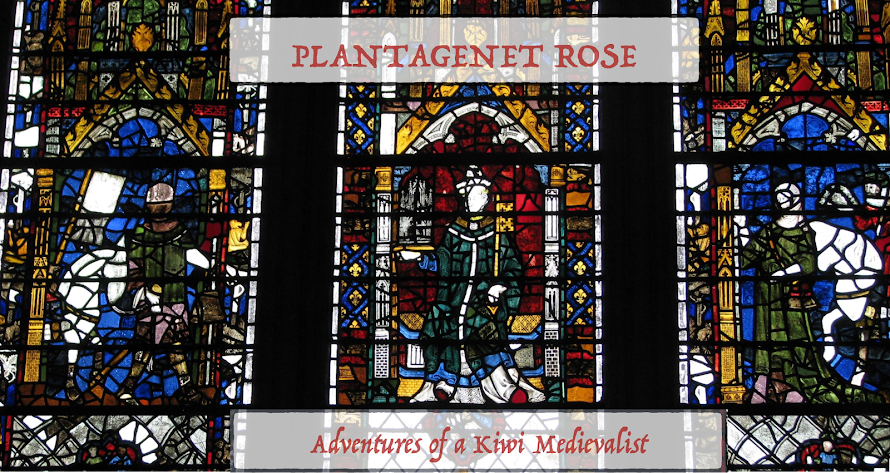Today, 29th September, is the feast of St Michael, or, as it was known in the Middle Ages, Michaelmas (the name is a shortening of St Michael's Mass). This day was an important one in the medieval calendar, as it was one of the four quarter days - the others being Lady Day (the feast of the Annunciation, 25th March in the modern calendar), Midsummer Day (24th June) and Christmas - on which accounts, rent and wages had to paid. Servants' terms of employment were also counted from one quarter day to the next, and on big manors or estates, Michaelmas was usually the day on which the reeve (who might be very loosely described as the chief peasant) was appointed.
The four quarter days roughly correspond with the four seasons, and in England Michaelmas was (and is) regarded as the start of autumn. The michaelmas daisy, which flowers in late September, takes its name from St Michael's feast day:
| Michaelmas Daisy. Image in public domain, via |
Sir Gawain and the Green Knight specifically mentions Michaelmas. Its approach heralds the onset winter, reminding Gawain that he must leave the safety of the court at Camelot and set out on his search for the mysterious Green Knight, whom he must find by the new year:
Bot then hyyes hervest, and hardenes hym sone,
Warnes hym for the wynter to wax ful rype;
He dryves with droghyt the dust for to ryse,
Fro the face of the folde to flyye ful hyghe;
Wrothe wynde of the welkyn wrastles with the sunne,
The leves laucen fro the lynde and lyghten on the grounde,
And al grayes the grese that grene was ere;
Then al rypes and rotes that ros upon fyrst.
And thus yirnes the yere in yisterdayes mony,
And wynter wyndes ayayn, as the worlde askes,
no fage,
Til Meghelmas mone
Was cumen with wynter wage.
Then thenkkles Gawain ful sone
Of his anious vyage.
Sir Gawain and the Green Knight l.521-35, in ed. A.C.. Cawley Pearl, Sir Gawain and the Green Knight (London: Everyman, 1970) |
| Medieval (14th century) depiction of St Micheal defeating the dragon (Satan), via. Note that St Michael's shield actually bears the cross of St George! |
New Zealand seasons being topsy-turvy to the English ones, we
are currently enjoying a very passable imitation of spring as described
by the Gawain poet, which you can read here.

No comments:
Post a Comment